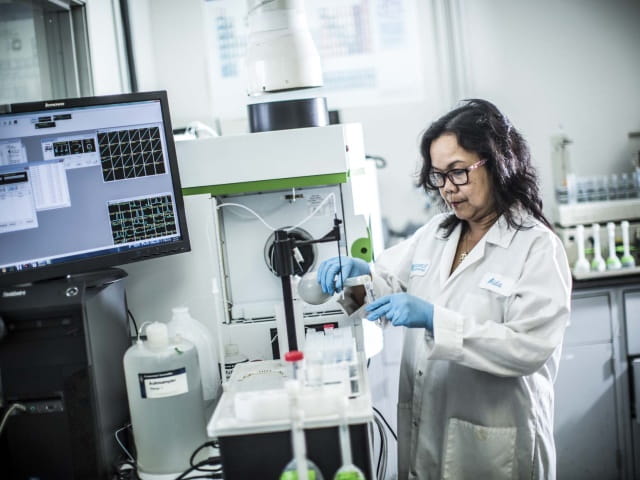Gain invaluable insights into the chemical composition, content, and quality of your materials with Element's comprehensive chemical analysis services. With global laboratories and advanced techniques for personalized testing and reporting, we provide you with peace of mind and confidence in the integrity of your materials.
What is Chemical Analysis?
Chemical analysis is the investigation of substances and materials to understand their composition and properties. It involves advanced techniques to identify and quantify individual chemical components within a sample. This provides essential data for scientific research, quality control, and making sure you align with regulations.
Key Benefits of Chemical Analysis
- Ensuring regulatory compliance: Ensure compliance with industry regulations, minimizing the risk of potential delays and recalls.
- Tailored solutions: Our chemical analysis services are customized to fit your schedule and budget.
- High quality results: We're committed to providing you with best-in-class testing, reporting, and guidance.
- Clarity in reporting: Our reports are easily understood, providing transparent and comprehensive insights. This clarity is key to helping you make well-informed decisions.
- Deeper insights, expertly explained: Additional advanced analysis by trained experts can be requested, improving your understanding of the results you receive.
- Global reach with a local approach: Our chemical analysis labs within the Middle East, Europe, Asia, and the Americas offer global access -wherever you are in the world.
Expert Chemical Analysis for Informed Decisions
We'll help you choose the right methods tailored to your unique needs, ensuring precise, reliable results. Count on our expertise for accurate, reliable results that empower you to make informed decisions crucial for product development, compliance, and overall success.
Tailored Solutions for your Chemical Analysis Requirements
We understand that every project is unique. Our services are customized to meet your specific chemical analysis needs. Whether it's budget constraints or project timelines, we've got you covered with tailored solutions. Expect precise results without unnecessary delays or costs.
Our Chemical Analysis Services and Capabilities
Our chemical analysis services cover a range of material types, from traditional metals and alloys to new polymers and composites. In addition to standardized procedures, our laboratories can set up custom or complex test plans. With deep experience across a range of industries including Aerospace, Energy, Environmental, Mining, Pharmaceutical, Construction, Manufacturing, and many more, we’re equipped to meet your unique needs.
Our comprehensive services include, but are not limited to:
- Atomic Absorption (AA) / Graphite Furnace Atomic Absorption (GFAA)
- Combustion Analysis
- Density and Specific Gravity
- Dimensional Stability
- Direct Current Plasma (DCP)
- Fourier Transform Infrared Spectroscopy (FTIR)
- Glow Discharge Spectrometry (GDS)
- Gas Chromatography/Mass Spectrometry (GC/MS)
- Gravimetric Wet Chemistry
- Ignition Loss
- Inductively Coupled Plasma (ICP)
- Moisture Content
- LECO Analysis
- Optical Emission Spectroscopy (OES)
- Positive Material Identification (PMI)
- Recovery Time
- Scanning Electron Analysis (SEM)
- Volatile Organic Compound (VOC) Determination
- Water Vapor Transmission
- X-Ray Diffraction (XRD)
- X-Ray Fluorescence (XRF)
Material Verification:
Manufacturers in various industries depend on material verification to ensure that their materials match certification documents. We deliver straightforward test reports with results and a pass/fail comparison. It’s a quick check for manufacturers to verify materials and troubleshoot in-service issues.
Material Identification:
In cases of lost certifications or ambiguous material origins, our chemists use advanced analysis techniques to uncover a material's complete chemical breakdown. This expertise allows Element to identify unknown materials, salvage recoverable substances, and reverse engineer or deformulate existing materials, products, or components.
Chemical Composition Testing and Analysis:
Identify chemical composition, determine quality, and spot impurities with the diverse techniques used by our chemical analysis labs, like arc spark-optical emission spectrometry and combustion. From analyzing bath solutions for electroplating to ensuring raw materials conform, our services ensure products meet specifications for strength, corrosion resistance, and toughness.
Contaminant Detection and Residue Analysis:
Swift and accurate identification of unexpected residues or substances is vital for correcting underlying issues and preserving product integrity.
Why Choose Element?
Whether your goal is to verify a material certification or to obtain a detailed breakdown of an unknown material, our global chemical analysis labs are here to guide you. We have the expertise to help you pick the right method, tailored to your unique needs, and ensure you're on the right track for regulatory and safety compliance.
For more information about chemical analysis and testing, contact us today. Learn more about Element and our credentials within the testing, inspection, and certification industry.
Chemical exposure testing applications
Your products must be able to withstand harsh conditions involved in your components’ end-use. Learn about how chemical exposure effects different materials in our case study.
READ CASE STUDYOur Services
Element's chemical analysis laboratories offer a comprehensive range of services.
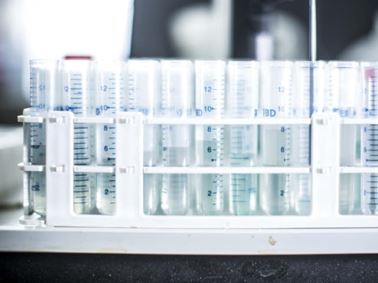
Atomic Absorption (AA)
Atomic Absorption (AA) or Graphite Furnace Atomic Absorption (GFAA) is used to provide a quantitative breakdown of individual elements within a sample.

Fourier Transform Infrared Spectroscopy (FTIR)
FTIR analysis allows chemists to use very small samples of a substance to identify and quantify its components.
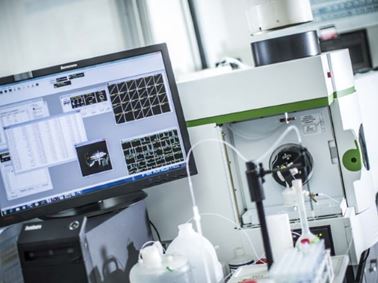
Gas Chromatography Mass Spectroscopy
GC/MS is a combination of two advanced analytical techniques which allow for the identification and precise quantification of volatile and semi-volatile compounds for liquid, gaseous and solid samples.
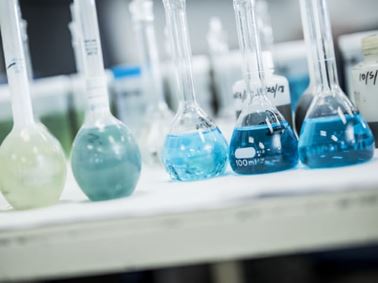
Inductively Coupled Plasma (ICP)
ICP analysis is a powerful chemical analysis method which can be used to identify both trace amounts and major concentrations of nearly all elements related to metallic samples.
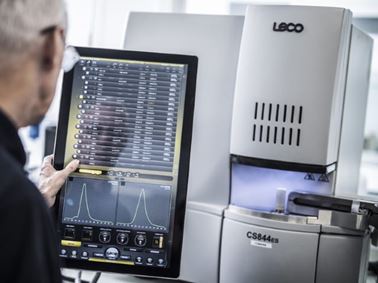
LECO Analysis
Combustion (LECO) analysis is a reliable method for determining the concentration of Carbon, Sulfur, Nitrogen, Oxygen, and Hydrogen in a metallic sample.
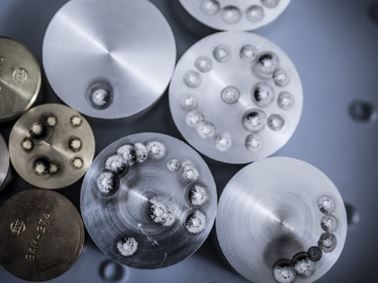
Optical Emission Spectroscopy (OES)
OES analysis is a quick option for determining the chemical composition of metal alloys.
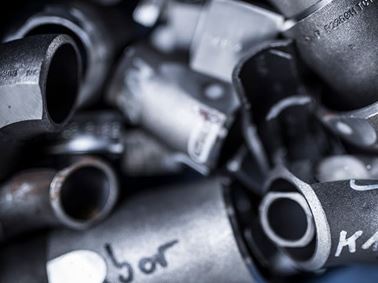
Positive Material Identification (PMI)
Positive Material Identification (PMI) is the identification and chemical analysis of various metal alloys through nondestructive methods.

Scanning Electron Microscopy (SEM)
SEM analysis is a powerful analytical tool which uses a focused beam of electrons to produce intricate, high magnification images of a sample’s surface topography.

X-Ray Fluorescence (XRF)
XRF analysis is a non-destructive analytical technique used to determine the elemental composition of materials.

X-Ray Diffraction (XRD) Analysis
Our engaged experts can review a variety of specifications and procedures, and help determine how x-ray diffraction can make your project a success.
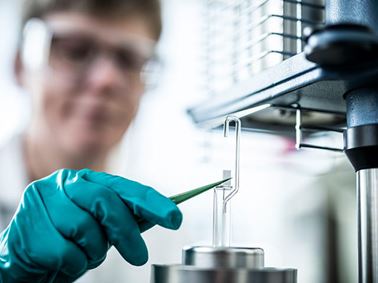
Thermogravimetric Analysis (TGA)
TGA measures a material's thermophysical and thermochemical properties by measuring the change in specimen mass as a function of temperature and time.

RoHS Compliance Testing
Find out how Element's RoHS Compliance testing services can help you verify levels of restricted substances and determine concentrations of RoHS substances in test samples.

Failure Analysis
Find out how Element's global team of failure analysis experts learn from the past, to help prevent failures in service.
Environmental Testing
Find out how we apply our 90 years of experience to help our customers to consistently meet the increasingly complex environmental obligations they face in the Americas, Europe and the Middle East.
